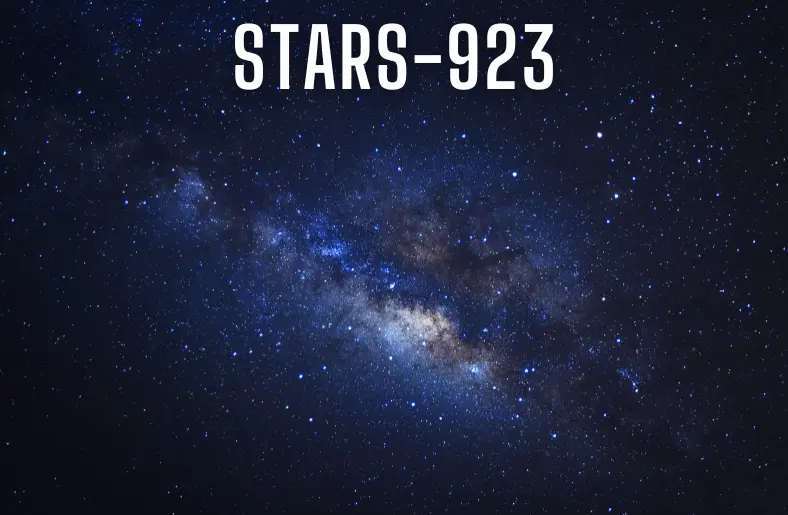Stars-923 represents a fascinating enigma in astrophysics due to its extraordinary characteristics. Consequently, this star challenges established stellar models and presents new questions for scientists. Moreover, it defies conventional expectations with its unique attributes. As a result, studying Stars-923’s is essential for advancing our understanding of the universe. Thus, investigating this celestial body offers a valuable opportunity to refine current theories on star formation and cosmic behavior. In addition, Stars-923 may reveal new insights into the fundamental processes governing stellar dynamics. Therefore, it is a crucial subject for modern science, promising significant breakthroughs in astrophysical research.
Understanding Stars-923
They stand out due to its unusual properties, making it a compelling subject. Firstly, its size and structure challenge conventional star classifications. For instance, its mass and radius deviate from standard models. Additionally, its behavior is marked by anomalies that intrigue researchers. Consequently, these deviations prompt scientists to reevaluate existing theories. Furthermore, the star’s composition includes elements not typically found in other stars. As a result, this unique composition provides clues about its formation history. Moreover, studying Stars-923’s helps refine our understanding of stellar evolution and dynamics. Therefore, its exploration is crucial for advancing astrophysical knowledge and theories.
The Unique Features of Stars-923
- Size and Structure Stars-923 exhibit an unusual size and structure, differing from typical stars. For instance, its mass and radius do not conform to common stellar models. Consequently, these anomalies prompt researchers to revisit and possibly revise current astrophysical theories and classifications.
- Anomalous Behavior The behavior of Stars-923 is marked by several anomalies. For example, its rotational speed and magnetic activity deviate from expected norms. Thus, these irregularities challenge the existing understanding of stellar dynamics and require further investigation to uncover their underlying causes.
- Composition Stars-923’s chemical composition is notably distinct. Specifically, it contains elements and isotopes rarely seen in other stars. As a result, this unique composition provides valuable insights into its formation process and environmental influences, further enhancing our knowledge of stellar evolution.
Theoretical Implications of Stars-923
Revising Stellar Models
They challenge existing stellar models with their unique features. Consequently, scientists must revise current theories to incorporate these anomalies. Thus, new models may emerge, better reflecting the complexities of stellar phenomena and expanding our understanding of star formation and evolution.
Impacts on Cosmology
The unique characteristics of Stars-923’s have significant cosmological implications. For instance, its behavior might explain anomalies observed in cosmic background radiation. Therefore, it could offer new insights into the distribution of matter and the large-scale structure of the universe.
Future Research Directions
Future research on Stars-923 is crucial for advancing astrophysics. Specifically, studies may focus on detailed observations and simulations. Hence, these efforts could refine existing theories or lead to the development of new frameworks to better explain this enigmatic star.
Advanced Technologies in Studying Stars-923
Advanced technologies are pivotal in studying Stars-923. Firstly, cutting-edge telescopes provide unprecedented detail, allowing astronomers to capture clearer images and spectra. This enhanced visibility uncovers intricate aspects of the star’s structure and behavior. Furthermore, innovations in spectroscopy, such as advanced detectors and calibration methods, enable more precise analysis of Stars-923.
These improvements help identify unusual elements and isotopes, shedding light on the star’s unique composition. Additionally, sophisticated computational models simulate the star’s behavior with remarkable accuracy. These models predict characteristics and test theories about Stars-923’s by integrating observational data. Consequently, they refine existing stellar frameworks or lead to new ones that accommodate their peculiarities. Thus, these technological advancements collectively enhance our understanding of Stars-923, making it a key subject of modern astrophysics research.
Comparative Case Studies
Comparative case studies provide valuable insights into Stars-923. To begin, examining similar stars helps highlight their unique features. This approach contrasts Stars-923 with other stellar objects, revealing differences in size, composition, and behavior. Additionally, historical case studies offer context for understanding unusual stars.
Previous discoveries of atypical stars often lead to significant advancements. Consequently, comparing Stars-923 with these historical cases can uncover new patterns. Moreover, exploring how other stars challenge classification systems helps refine our understanding of Stars-923. Such comparisons contribute to developing new categories or subclasses within stellar classifications. Therefore, by integrating various case studies, we gain a deeper comprehension of Stars-923 and its role in astrophysics.
Also Read: Do Shrooms Expire? How to Store Them Safely
Conclusion
In conclusion, They represent a fascinating anomaly in astrophysics. Its unique characteristics challenge existing models and theories. As a result, it offers new insights into stellar phenomena. Moreover, studying Stars-923’s helps refine our understanding of star formation and behavior. Consequently, this research has broad implications for cosmology. By integrating advanced technologies and comparative studies, we gain a deeper understanding. Therefore, They not only enrich our knowledge but also guide future research. Overall, it stands as a testament to the complexities of the universe.




